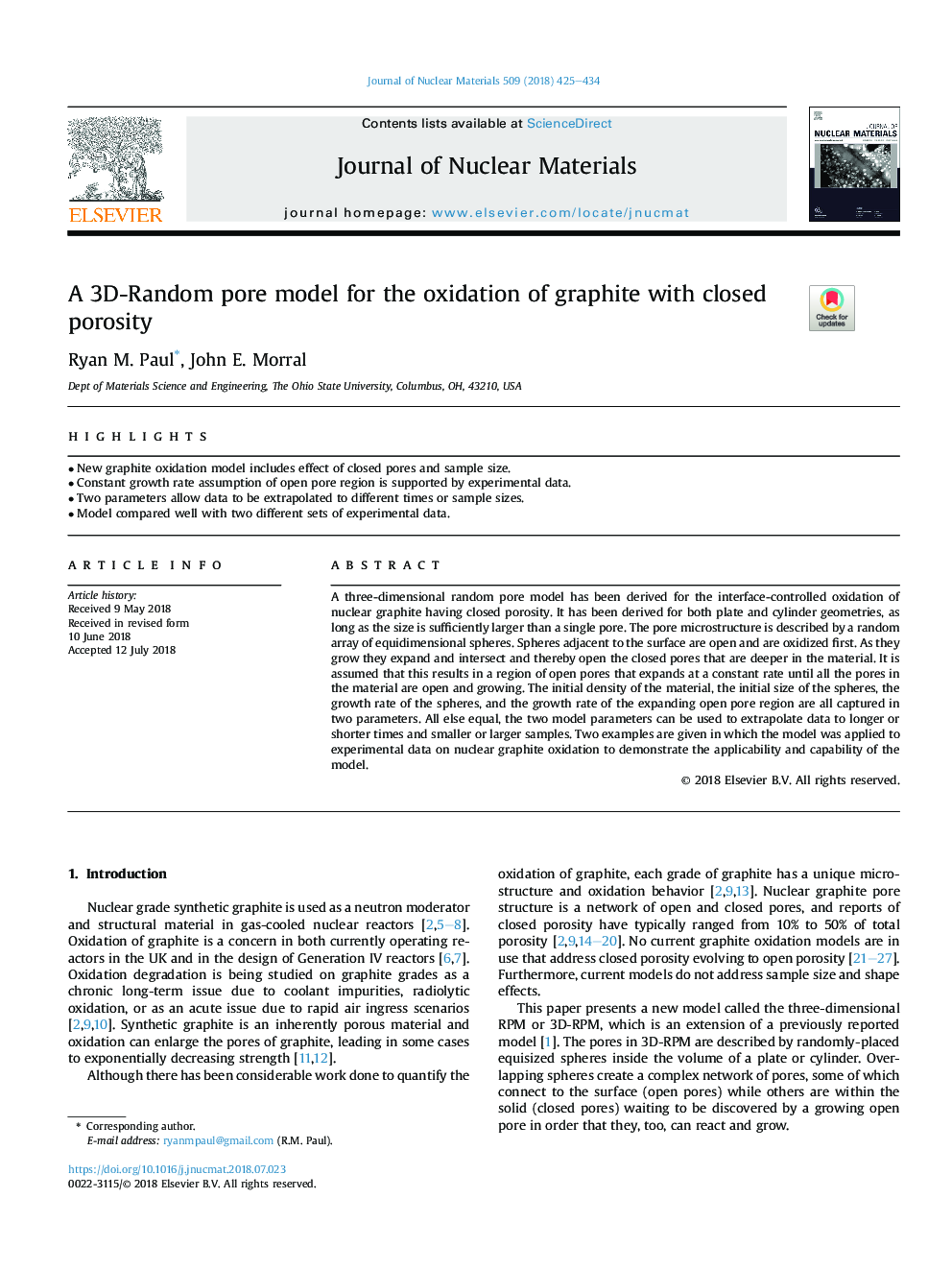| کد مقاله | کد نشریه | سال انتشار | مقاله انگلیسی | نسخه تمام متن |
|---|---|---|---|---|
| 7963006 | 1514137 | 2018 | 10 صفحه PDF | دانلود رایگان |
عنوان انگلیسی مقاله ISI
A 3D-Random pore model for the oxidation of graphite with closed porosity
ترجمه فارسی عنوان
یک مدل منحنی تصادفی سه بعدی برای اکسیداسیون گرافیت با تخلخل بسته
دانلود مقاله + سفارش ترجمه
دانلود مقاله ISI انگلیسی
رایگان برای ایرانیان
ترجمه چکیده
یک مدل منفرد تصادفی سه بعدی برای اکسیداسیون گرافیتی گرافیتی با تخلخل بسته بسته شده است. این برای هر دو هندسه صفحات و سیلندر مشتق شده است، تا زمانی که اندازه به اندازه کافی بزرگتر از یک منحنی منفرد است. ریز ساختار منفذ توسط یک آرایه تصادفی از حوزه های یکسان اندازه گیری شده است. کره های مجاور به سطح باز هستند و ابتدا اکسید می شوند. با رشد آنها، آنها گسترش می یابند و به هم متصل می شوند و بنابراین منافذ بسته را که عمیق تر از مواد هستند باز می کنند. فرض بر این است که این منجر به یک ناحیه منافذ باز می شود که با سرعت ثابت گسترش می یابد تا تمام منافذ مواد باز و در حال رشد باشد. تراکم اولیه مواد، اندازه اولیه کره ها، نرخ رشد کره ها و نرخ رشد منطقه گسترش منافذ باز، در دو پارامتر ذخیره می شوند. همه چیز برابر است، دو پارامتر مدل می تواند برای استخراج داده ها به زمان های دیگر یا کوتاهتر و نمونه های کوچکتر یا بزرگتر مورد استفاده قرار گیرد. دو مثال ذکر شده است که در آن مدل برای داده های تجربی از اکسیداسیون گرافیت هسته ای برای نشان دادن کاربرد و قابلیت مدل استفاده شده است.
موضوعات مرتبط
مهندسی و علوم پایه
مهندسی انرژی
انرژی هسته ای و مهندسی
چکیده انگلیسی
A three-dimensional random pore model has been derived for the interface-controlled oxidation of nuclear graphite having closed porosity. It has been derived for both plate and cylinder geometries, as long as the size is sufficiently larger than a single pore. The pore microstructure is described by a random array of equidimensional spheres. Spheres adjacent to the surface are open and are oxidized first. As they grow they expand and intersect and thereby open the closed pores that are deeper in the material. It is assumed that this results in a region of open pores that expands at a constant rate until all the pores in the material are open and growing. The initial density of the material, the initial size of the spheres, the growth rate of the spheres, and the growth rate of the expanding open pore region are all captured in two parameters. All else equal, the two model parameters can be used to extrapolate data to longer or shorter times and smaller or larger samples. Two examples are given in which the model was applied to experimental data on nuclear graphite oxidation to demonstrate the applicability and capability of the model.
ناشر
Database: Elsevier - ScienceDirect (ساینس دایرکت)
Journal: Journal of Nuclear Materials - Volume 509, October 2018, Pages 425-434
Journal: Journal of Nuclear Materials - Volume 509, October 2018, Pages 425-434
نویسندگان
Ryan M. Paul, John E. Morral,
